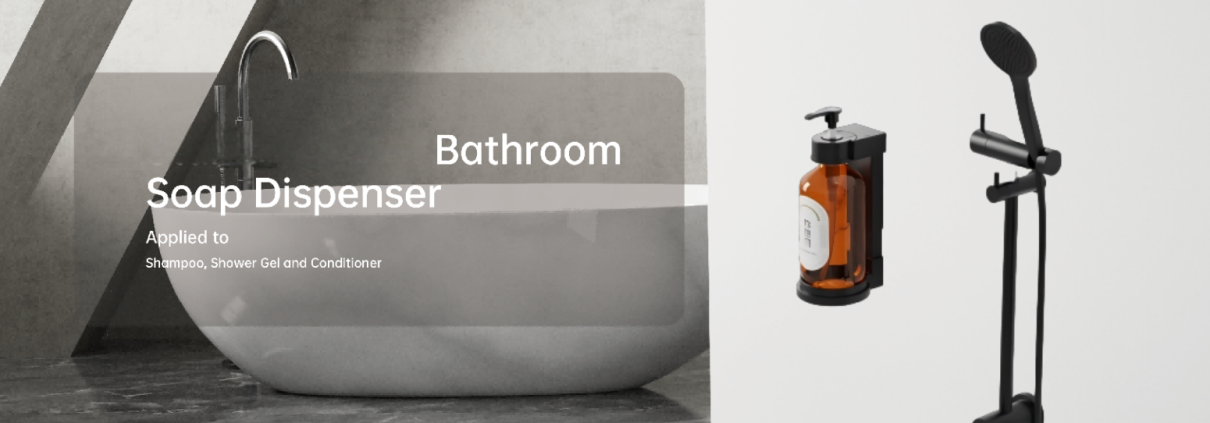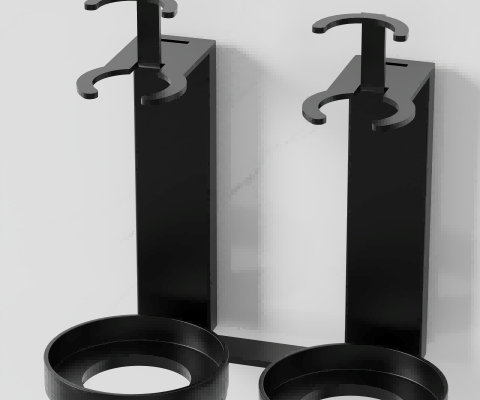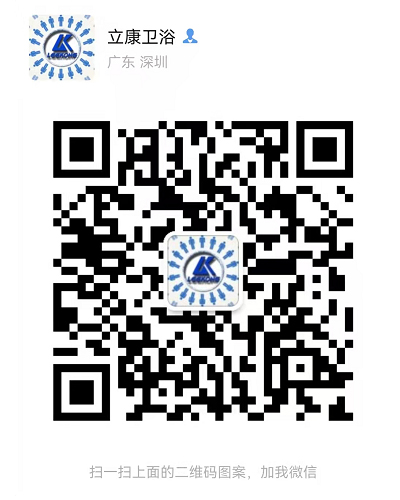The Magnetic Stranglehold: How Trump’s 200% Tariff Threat on China Ripples All the Way to Your Hotel Bathroom
Introduction: An Invisible Dependency
We live in a world powered by the invisible. In the palm of your hand, in the car you drive, and in the very room you’re sitting in, countless devices hum with life thanks to a technological marvel most never think about: the permanent magnet. Not just any magnet, but high-performance rare-earth magnets, primarily made from an alloy called Neodymium (NdFeB).
These magnets are the silent, powerful hearts of the modern world. They turn the motors in electric vehicles, spin the turbines in wind generators, and drive the hard drives and speakers in our computers. Their strength, efficiency, and miniaturization are unparalleled. And as former President Donald Trump loudly proclaimed on the campaign trail, China holds a near-total monopoly on their production. His threat? A staggering 200% tariff on Chinese-made magnets unless the supply is secured on his terms—a move he claims is vital for national and economic security.
While the discourse focuses on EVs and missiles, the ripple effects of such a tectonic shift in trade policy would be felt far and wide, reaching deep into the seemingly unrelated corridors of the global hotel industry. How? The answer might surprise you the next time you check into a hotel and wave your hand under an automated soap dispenser.
Part 1: The Core of the Crisis – China’s Magnetic Monopoly
First, let’s dissect Trump’s claim. Is it just political hyperbole? Surprisingly, the facts largely back him up.
The Scale of Dominance: China controls over 90% of the global production of rare earth permanent magnets. This dominance isn’t accidental. It stems from a decades-long, state-supported strategy to control the entire value chain—from mining the raw rare earth minerals (where China also holds a commanding share) to the complex processes of refining, alloying, and magnet sintering.
Why It Matters: These magnets aren’t a commodity like steel or plastic. They are a critical enabler of high-tech and green technology. An electric vehicle uses several kilograms of them. A single modern wind turbine can use up to a ton. Without a stable, affordable supply, the ambitions of nations and corporations to transition to a green economy hit a monumental roadblock.
The Trump Doctrine: Tariffs as a Blunt Instrument: Trump’s proposed solution is classic Trumpian economics: use the sledgehammer of tariffs to smash the dependency. A 200% tariff is not designed to be a nuisance; it’s designed to be a kill switch.
The goal is twofold:
- Compel Immediate Concession: To strong-arm China into “supplying” magnets on terms more favorable to the U.S., potentially involving direct deals or forced technology transfers.
- Onshore Production: To make Chinese magnets so prohibitively expensive that U.S. manufacturers are forced to source elsewhere, thereby catalyzing a rebirth of the magnet and rare earth processing industry in America almost overnight.
The immediate analyses focused on the big-ticket items: the added cost to EVs, the impact on national defense contractors, and the potential for renewed inflation. But protectionism, like gravity, pulls everything downward. The cost increases trickle down through every layer of the manufacturing ecosystem, eventually landing in the most unexpected places.
Part 2: The Unlikely Connector: Magnets in the Modern Hotel Industry
Now, let’s step into the world of hospitality. The hotel industry is a master of ambiance, experience, and operational efficiency. In the relentless pursuit of these goals, technology has become deeply embedded, much of it relying on the very components caught in the crosshairs of a new trade war.
Consider the modern, upscale hotel bathroom. It’s a sanctuary designed for convenience and a touch of futuristic elegance. Gone are the messy, germ-ridden bar soaps and pump bottles. In their place is the sleek, hygienic, and touch-free sensor soap dispenser.
(Image: An infographic breaking down a sensor soap dispenser, highlighting the small but powerful neodymium magnet inside the motor that drives the pump.)
This ubiquitous device is a perfect case study. Inside every automated soap dispenser is a small electric motor that drives the pump. And inside that tiny motor, providing the precise and powerful force needed for its quick, reliable operation, is a neodymium magnet.
The hospitality industry buys these dispensers by the millions. They are in every guest room, every public restroom, in gyms, and in spas. For a large hotel chain like Marriott or Hilton, a standard renovation or new build project might involve ordering hundreds of thousands of units. Their reliability is non-negotiable; a malfunctioning dispenser leads to guest complaints, maintenance calls, and a perceived drop in quality.
Currently, these units are affordable. Manufacturers, primarily based in China or sourcing their components from there, can produce them at a cost that allows hotels to purchase them in bulk without a second thought. The entire supply chain is optimized around this Chinese dominance.
Part 3: The Ripple Effect: 200% Tariffs Check Into the Hotel
So, what happens when Trump’s 200% tariff is implemented?
Phase 1: The Direct Hit to Hardware Suppliers
The companies that manufacture sensor soap dispensers face an immediate and catastrophic cost increase. The core component driving the motor—the magnet—has suddenly seen its price multiply. A magnet that cost $1 now costs $3. This doesn’t just add $2 to the final product cost; it creates inflationary pressure on the entire manufacturing process. The cost of the motor assembly goes up, the cost of the final assembly goes up, and the overhead is spread across a now more expensive product.
Phase 2: The Hospitality Industry’s Soaring OPEX
The hotel industry is a business of razor-thin margins where operational expenditure (OPEX) is meticulously managed. The purchasing managers for major hotel chains now receive new quotes from their suppliers for automated soap dispensers. The price has potentially doubled.
They are faced with a brutal set of choices:
Choice A: Absorb the Cost: Eat the massive price increase, destroying their profitability on rooms and putting downward pressure on employee wages and other guest experience investments.
Choice B: Pass it On to the Guest: Increase room rates. In a competitive market, this is a dangerous game. The guest may not understand why a stay at a mid-tier hotel now costs 10% more, and they will simply book elsewhere.
Choice C: Degrade the Experience: Go backwards. Abandon the touch-free, hygienic standard and revert to cheap, wall-mounted plastic bottles or bar soaps. This is a devastating step back for an industry that sells itself on quality, cleanliness, and modern comfort. A guest’s perception of a hotel’s cleanliness is paramount, and a downgraded bathroom amenity sends a powerfully negative message.
Phase 4: The Innovation Freeze
Beyond immediate costs, innovation grinds to a halt. Hotel brands are constantly looking for the next amenity to differentiate themselves. Imagine smart mirrors with integrated displays, advanced climate control systems, or even in-room robotics—all concepts in development. Nearly all of them rely on high-efficiency motors and actuators powered by neodymium magnets. A trade war that makes these components unaffordable doesn’t just impact today’s soap dispensers; it postpones the next generation of hotel technology indefinitely.
Part 4: Beyond the Bathroom – A Hotel’s Silent Magnetic Dependency
The soap dispenser is just the tip of the iceberg. A hotel’s reliance on magnets is pervasive:
HVAC Systems: The compressors in modern, energy-efficient heating and cooling systems use magnetized motors.
Security Systems: Key card readers, electronic door locks, and alarm systems all contain critical magnetic components.
Kitchen and Laundry: The motors in industrial dishwashers, elevators, and laundry machinery are major consumers of magnetic technology.
Back of House: Computers, servers, and power backup systems all rely on this technology.
A 200% tariff on the core component of all this machinery doesn’t just affect capital expenditure (CAPEX) for new builds; it cripples the maintenance and replacement budget for existing properties. The cost of replacing a failed HVAC motor could become prohibitive.
Conclusion: The High Cost of Decoupling
Donald Trump’s threat of a 200% tariff on Chinese magnets is framed as a bold move to reclaim American economic sovereignty. The intended targets are clear: electric vehicles and defense. However, the law of unintended consequences dictates that the shrapnel from this economic policy will fly far and wide, embedding itself in the fabric of everyday business and life.
The hotel industry, a global sector that relies on predictability, cost control, and continuous innovation to provide a seamless guest experience, finds itself an unwitting casualty. The journey from a geopolitical tariff threat to a higher minibar bill or a less luxurious bathroom experience is shorter than it appears. It is a journey powered by a tiny, powerful magnet—a reminder of how interconnected and fragile our globalized supply chain truly is.
The path to a secure supply of critical materials is necessary, but it must be tread carefully. A sledgehammer approach might aim for China’s monopoly but end up smashing the sophisticated, cost-effective ecosystem that supports industries from clean energy to something as simple as ensuring a hotel guest can get a squirt of soap without touching a germ-laden pump. The true test of policy is not just in protecting national security, but in understanding and mitigating the cascading effects that eventually check in at every hotel door.





